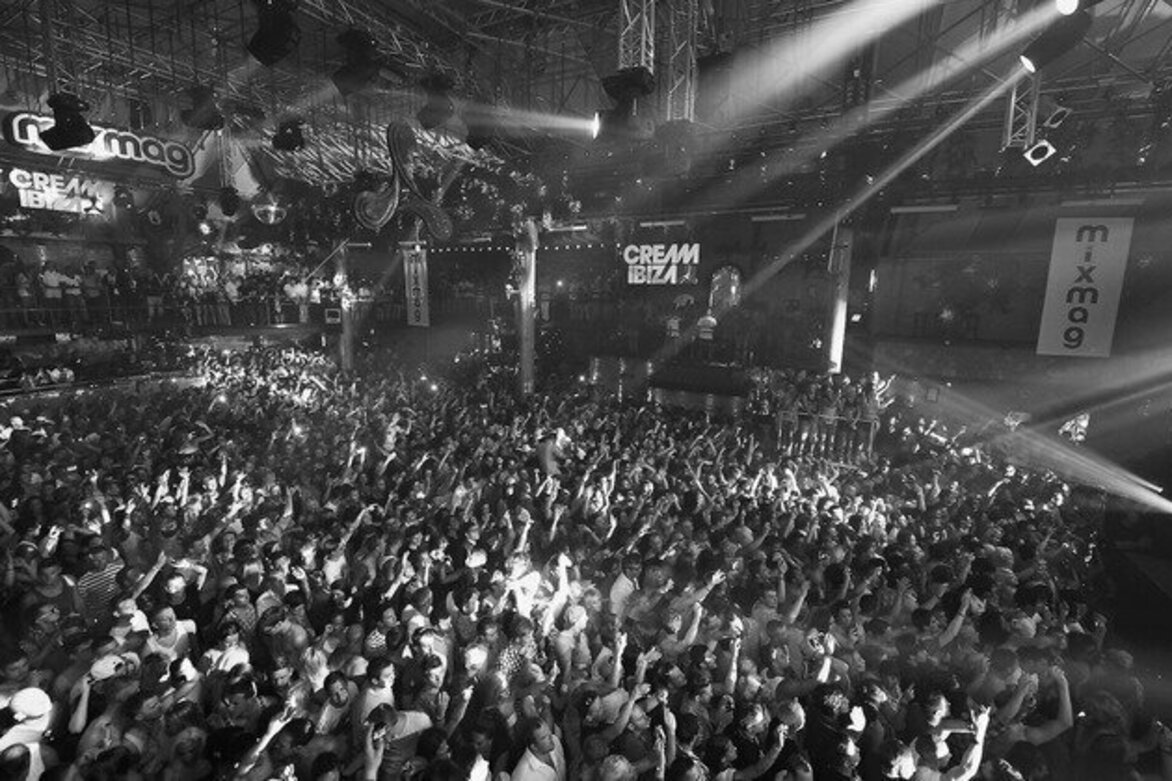A brief history of dance music - from basements to beaches, dancefloors have mirrored social change
The Conversation
03 Apr 2025

When US rock'n'roll arrived in the UK in the mid-1950s, there were few places for British teenagers to dance to this exciting new genre. But by the early 1960s, dance venues specifically aimed at teenagers began to open in towns and cities.
Unlike the sometimes grand and opulent ballrooms that had been the stomping grounds of their parents, the new teen-oriented discotheques of the 1960s tended to be located in altogether contrasting spaces, in terms of architecture and atmosphere.
Several of these new youth nightclubs were in cellars of somewhat dilapidated buildings. They were often unlicensed and aimed at teenagers younger than the legal drinking age.
Sometimes described as "coffee dance clubs" or "continental style", the novelty of these new spaces was reflected an the uncertainty of how to describe them. The dancing was predominantly fuelled by recorded music. This allowed British teenagers, many of them identifying as mods (the stylish youth subculture that flourished in the early to mid 1960s) to hear electrifying rhythm and blues artists from America.
In our new book, Transatlantic Drift: The Ebb and Flow of Dance Music, we discuss these pioneering clubs and the innovative musicians, performers and DJs that have inspired people to congregate and dance.
Looking for something good? Cut through the noise with a carefully curated selection of the latest releases, live events and exhibitions, straight to your inbox every fortnight, on Fridays. Sign up here.
Being based underground enhanced the atmosphere in the clubs. Attendees were simultaneously part of an underground movement and also literally hidden from view from the adult world.
For a few years between 1963 and 1966, subterranean hedonism existed under the surface - and the mod club scene flourished. The architecture of these spaces provided distinctive environments for the young dancers which led to notably visceral experiences. These were hot, dimly lit, crowded, smoke and sweat-filled spaces where the music ricocheted off surfaces and fed directly back into the dancing bodies.
The subterranean location sometimes emphasised in the choice of name for these clubs - Cavern, Dug Out, Dungeon, Catacombs, Heaven and Hell.
The Sinking Ship club in Stockport was located in a cave carved out of red sandstone rocks. The condensation that dripped back on to the dancers was infused with red mineral deposits, leaving a particularly vibrant sensory memory of an all-night dance session.
At the tail end of the mod club era, in 1966 US R&B stars Etta James and Sugar Pie DeSanto released the track In the Basement - Part 1. Although the song refers to a house party rather than a nightclub, it captured the zeitgeist of the mid 1960s mod dance era, and the locations in which it flourished. DeSanto, in particular, was hugely popular with the mod crowd.
Alongside the trend for naming the clubs in reference to their below-ground location, another tendency was for clubs to be named with reference to places outside of the UK, giving a sense of escapism and glamour.
This was often in the form of words of Latin origin, such as La Discotheque, The Bodega and El Partido. This reference to Europe chimed with the mod passion for continental European style. It was also arguably a portent of what was to come as these locations transformed.
The latter part of the 20th century finally brought club culture into the light. A glorious confluence of musical, meteorological and pharmaceutical effects combined to form, it might be argued, the last great "spectacular" subculture.
In the 1980s, raw, electronic beats filtered out of American cities such as Chicago and Detroit and travelled across the Atlantic, first in trickles then ultimately in waves, consuming willing European DJs.
In Ibiza, for instance, Argentinian Alfredo Fiorito (having fled the restrictions of the junta in his native Argentina), played Chicago house and Detroit techno along with his usual Euro pop and electronica. His canvas was the dance floor of the nightclub Amnesia, where he deejayed through the night and into morning. It was not so much that his deejaying blew the roof off the place - more that Amnesia had no roof in the first place.
In the sunshine, vitamin D mingled and reacted to the rather less natural flow of drug E around the body. MDMA or ecstasy and shortened to E, presented another intriguing combination - this time of German engineering and American appropriation. For users, it became the perfect pharmaceutical filter to enjoy house music through.
Brits holidaying on Ibiza in 1987 experienced something of an epiphany and took the party drug culture back to the UK. Back home, parties erupted like magical crops with illegal raves in farms and fields around the M25 orbital motorway.
Events like Sunrise, Energy and Biology eschewed nightclubs completely, preferring to set up in the great outdoors. Ravers found that partying in the sunshine took them back to something primal and pagan. They celebrated in, and with, nature in a reconstituted Shakespearean Arden, powered by the sun from above and the energy from the ground beneath.
In this way, the story of club culture emerged from the cellars and basements of a subterranean, nocturnal world and found its way into the light.
The repercussions of this transatlantic drift, this musical flow of beats and ideas, then spread out further like sonic waves across the planet. We can see traces in festivals like the Notting Hill Carnival. We can further trace that beat as it broke out of the weekend and then the UK completely - a neo-hippy trail taking in the free party scene across Europe, and particularly eastern Europe, and on, to the trance scene in Goa and Thailand's full-moon parties.
In Ibiza, new laws and noise regulations means that they have literally been able to put the roof back on, but elsewhere the spirit of raves and rays, of disco al fresco, seems unstoppable.
